This Paska recipe makes the perfect sweet Paska buns to enjoy in spring or at Easter! It’s the BEST Paska bread recipe made with a fresh citrus-infused sweet dough, creamy frosting and sprinkles!
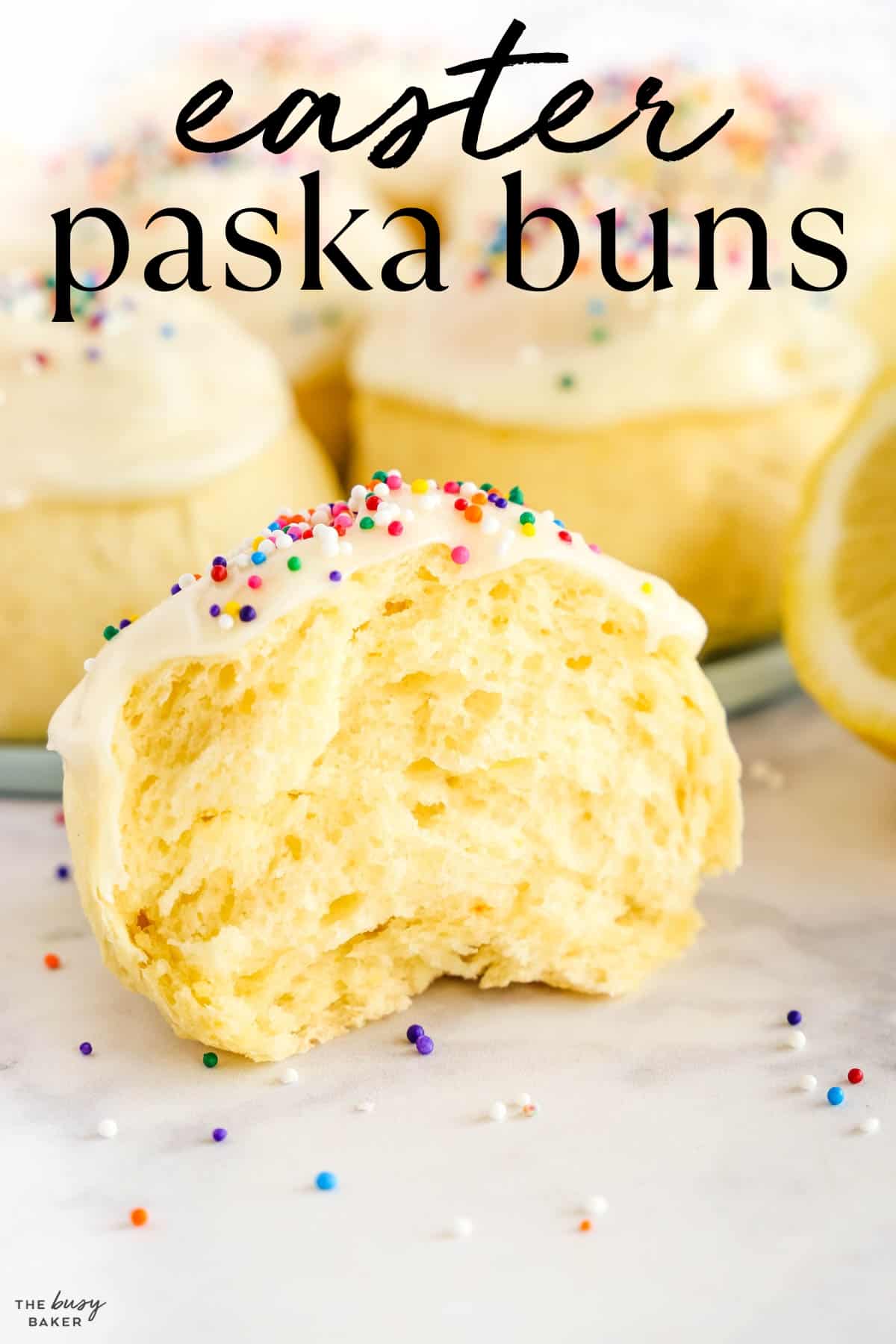
Estimated reading time: 11 minutes
When it comes to Easter treats, nothing beats a deliciously sweet and fluffy Paska bread! The sweet bread dough is made with an infusion of citrus, making it ultra fragrant and oh so sweet and tasty. We love enjoying this Paska recipe as buns, but it can also be made into loaves and sliced like sandwich bread or braided into loaves for an extra special treat!
Paska is a traditional Eastern European sweet bread made with a strong citrus flavour. A festive bread or bun recipe, it’s made to celebrate Easter and it’s one of those dishes that has so many different variations depending on the culture and region in which it’s made.
Paska recipes are passed down in families, so don’t be surprised if you discover different variations of Paska bread that come from different Eastern European countries. We love adding a simple frosting and sprinkles to take it to the next level (and the kids LOVE it!), but the simple lemon and orange infused dough on its own makes for a beautiful sweet Easter treat.
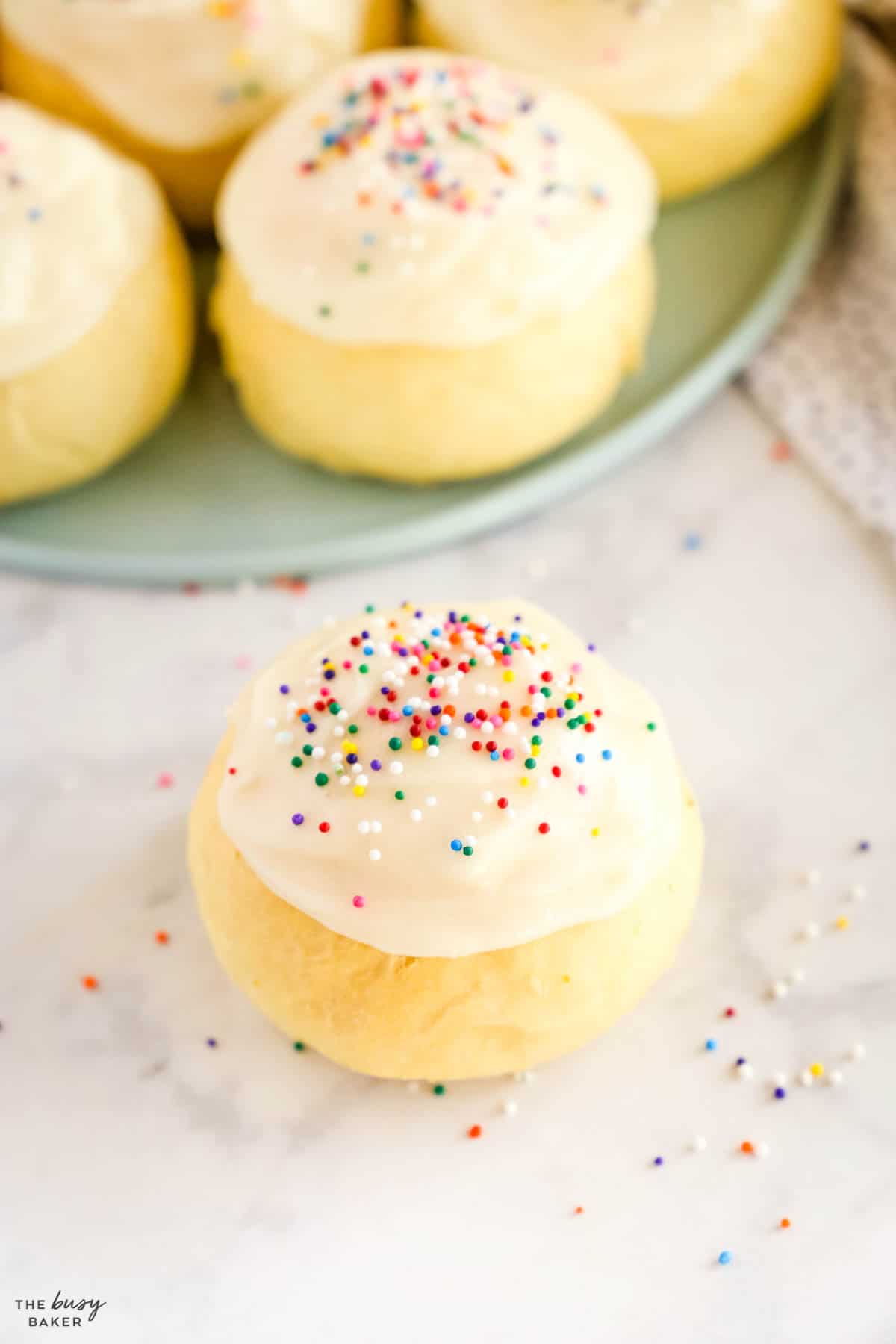
Follow these tips to make the BEST Paska bread or Paska buns!
Read the recipe in its entirety before you begin and make sure you have all the ingredients. You can even measure out the ingredients in advance before you combine them – this can help you measure accurately.
Use ingredients like eggs, milk, and butter at room temperature to ensure they incorporate smoothly into the dough and maintain the right temperature for optimal rising.
In order to achieve a fluffy dough that rises well, the temperature of the wet ingredients when they hit the yeast is critical: too cold, and the yeast won’t be able to grow; too hot and the liquid will kill the yeast. Both of these situations will cause your dough to be tough and dry and you’ll be lucky if it rises at all.
Ensure the butter/milk/sugar mixture is slightly warm to the touch (about 100 to 110 degrees Fahrenheit or 38 to 43 degrees Celsius) to activate the yeast without killing it. An instant-read thermometer is a handy tool for this, if you’re unsure. If you don’t have an instant-read thermometer aim for the temperature of a baby’s bath water: not hot, just barely warm
This recipe calls for active dry yeast which, technically, is already active and could be added to the dry ingredients. We love dissolving it in water with a little sugar to give the dough it a faster rise time and to make the dough more smooth because the yeast is dissolved first.
Measure flour in a dry measuring cup and aerate the flour first (fluff it up). Don’t pack it down into the cup. Instead, lightly scoop the flour and scrape the excess off the top with something flat (like the back of a knife).
Too little flour and the dough will be too sticky and will result in dense buns. Too much flour and the dough will be tough, resulting in dry, crumbly buns. Be sure to measure your flour accurately.
Liquid should be measured in a liquid measuring cup, NOT a measuring cup used for dry ingredients like flour or sugar. Measuring the liquid correctly can prevent you from adding too much, which makes the bread dough too sticky to work with.
The Paska dough should be tacky to the touch, but not so sticky that it’s very messy. It should pull away from the sides of the mixing bowl easily and the bowl should appear fairly clean. If the dough appears too sticky, continue kneading and add flour one tablespoon at a time until the dough reaches that tacky texture.
Letting the dough rise too long will cause it to deflate or develop large air bubbles that completely ruin the structure of the loaf when baking and prevent it from rising in the oven. Be sure to follow the recipe directions carefully to be sure you don’t overproof the dough.
Turn the dough out onto a very lightly greased work surface rather than flouring the work surface. This makes the dough easy to roll out and it helps the surface of the dough to remain soft instead of drying it out like adding more flour would do. I like to spritz my counter top with a little bit of vegetable oil to make sure the dough doesn’t stick and it works like a charm!
Allow the buns to cool for at least 20-30 minutes before trying to remove them from the pan. If you plan to frost the buns, we recommend waiting until they’ve cooled almost completely to prevent the frosting from melting off.
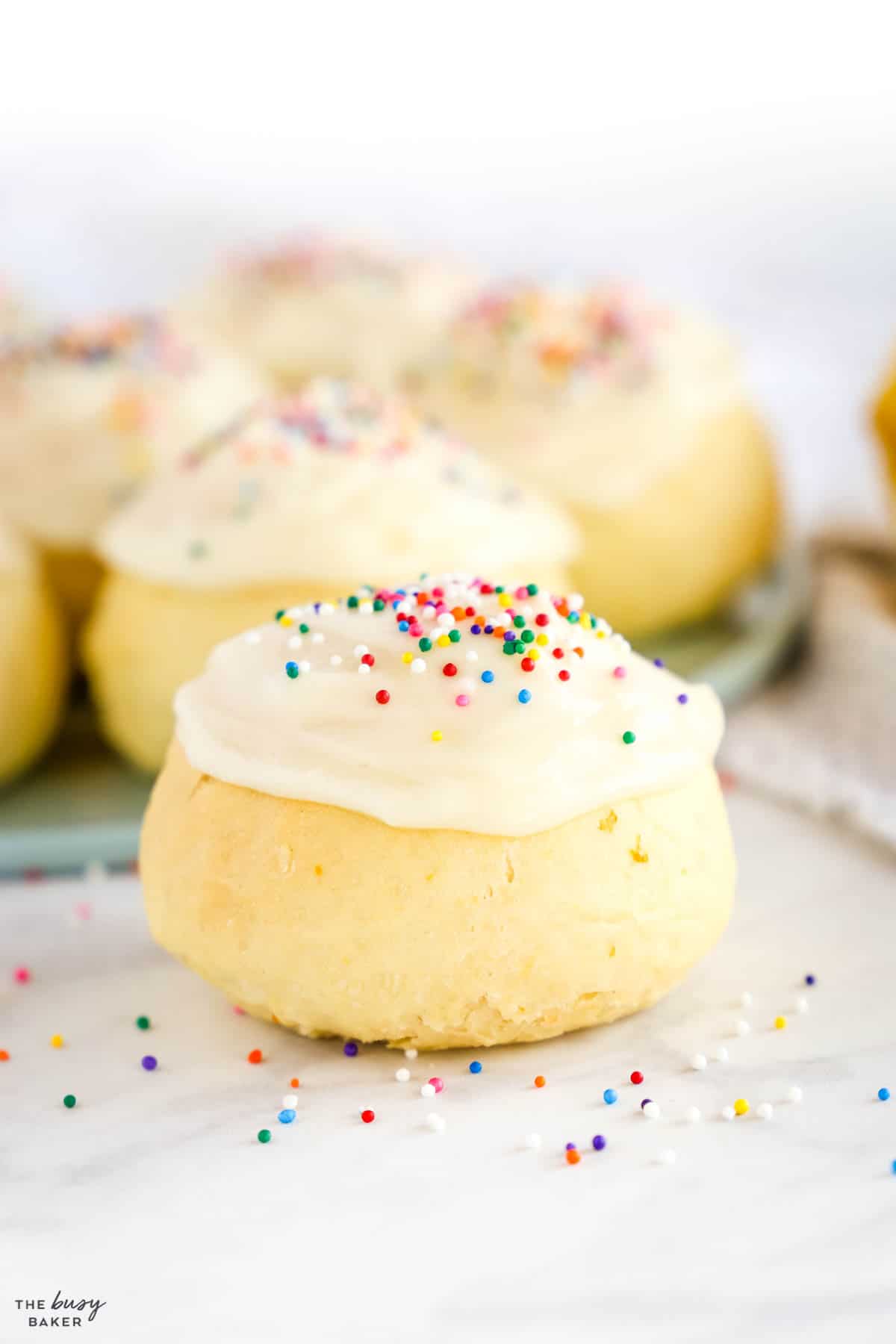
If the Paska bread is dry, it could be from over-baking or adding too much flour to the dough. Follow the recipe for the recommended bake time and be sure not to add extra flour to the dough beyond what’s written in the recipe.
Under-proofing the dough will cause it to be too dense. Be sure to knead the dough well and rise until the dough has doubled in size.
Under-baking the Paska bread makes it gummy on the inside. Never cut into a loaf or a bun that’s hot from the oven because there’s a good chance it’ll be gummy inside. Let it cool to room temperature before slicing or serving. Bread continues to bake on the inside even after it’s been removed from the oven.
Proper proofing is important. Let the dough rise in a warm, draft-free place. A lightly greased bowl covered with plastic wrap, placed in a warm spot like an oven with the light on is ideal (don’t turn the oven on – just the light). Allow enough time to rise but don’t let it over-rise or the dough will start to deflate and lose its shape.
If the loaf or buns aren’t shaped properly, it can lead to uneven rising. Make sure the dough is shaped evenly. Expired yeast can also lead to uneven rising. Make sure to check your ingredients and their best before dates before you use them.
If the Paska buns bake unevenly, it can be because the yeast wasn’t distributed properly or you might have a hot spot in your oven. Make sure to preheat the oven first. Uneven oven temperature can cause inconsistent baking. If you’re not confident that your oven heats evenly, we recommend rotating the baking pan halfway through baking for more even baking.
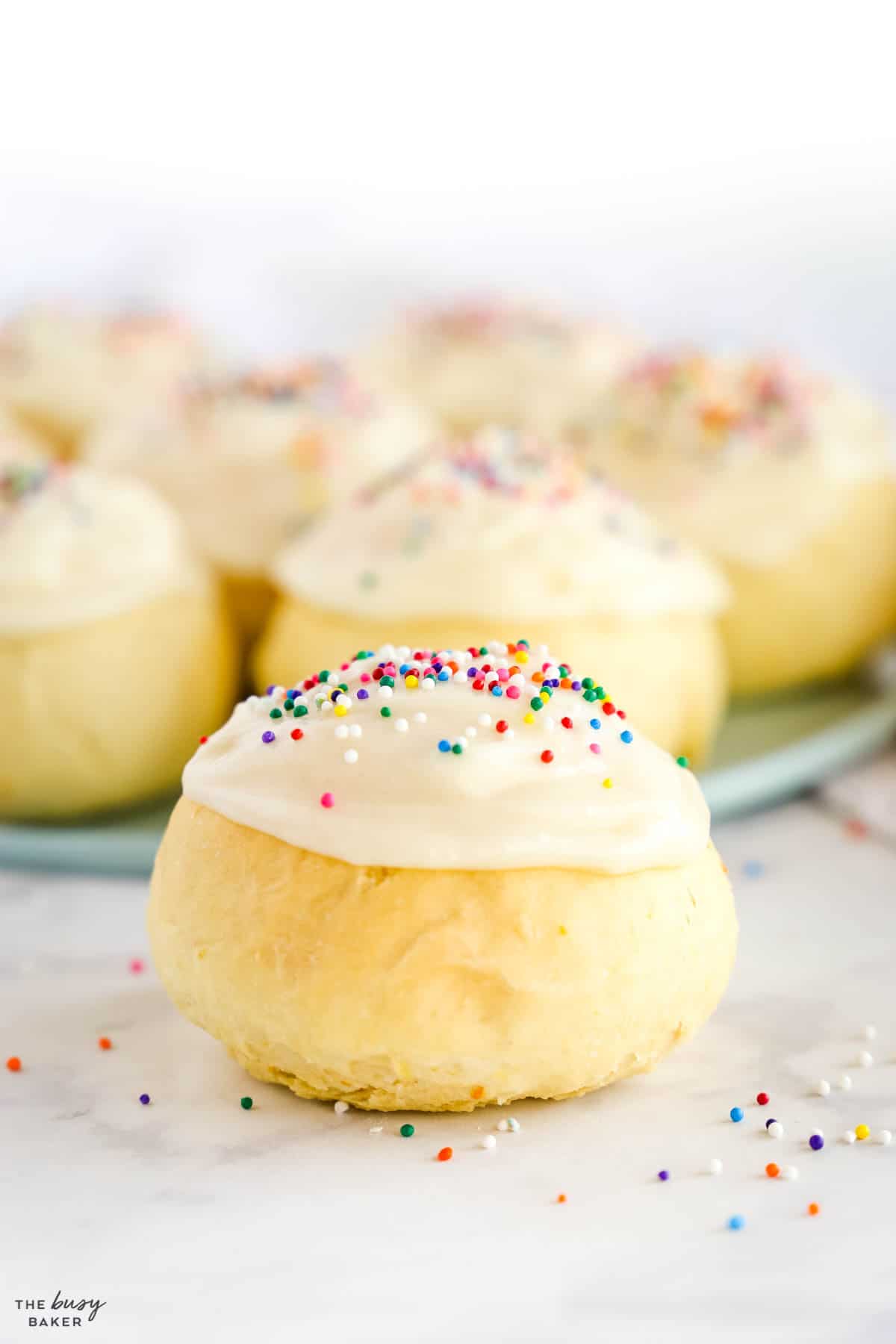
You’ll need these items on hand to make this Paska bread recipe (paid links):
- Stand Mixer
- liquid measuring cups
- measuring cups and spoons
- mixing bowls
- Microplane Zester
- Silicone Spatula
- Cutting Board
- large sheet pan or loaf pans
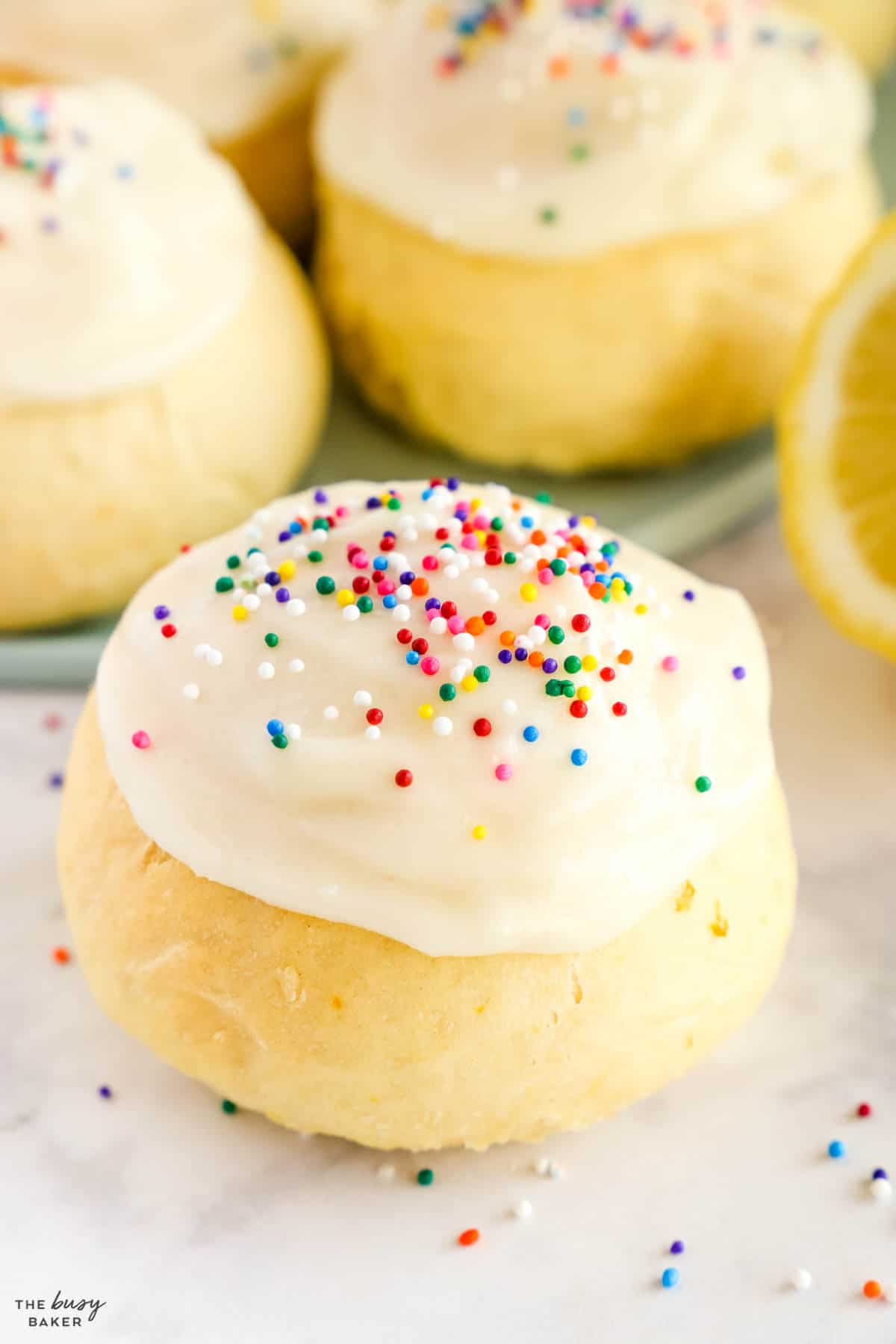
You’ll need these ingredients to make this sweet Paska bread recipe (paid links):
FOR THE BUNS
- 2 tablespoons active dry yeast
- 1 cup room temperature water
- 1 teaspoon white sugar
- 7 – 7 1/2 cups all purpose flour
- 3/4 teaspoon salt
- 1 lemon
- 1 orange
- 1 1/4 cups milk, at room temperature
- 1/2 cup butter, melted
- 2 eggs
- 3/4 cup sugar
FOR THE FROSTING
- 8 ounces full fat cream cheese, at room temperature
- 1/2 cup butter, at room temperature
- 2 cups powdered sugar
- a few drops of milk, until spreadable consistency is reached
- sprinkles (if desired)
Here are a few variations to try for this sweet Paska Easter bread recipe!
- Orange and Cranberry – Soak dried cranberries in orange juice, then drain them. Add the rehydrated cranberries to the dough.
- Chocolate Chip – Add chocolate chips into the dough for extra sweetness.
- Rum and Raisin – Soak some raisins in rum for an hour or so, drain them, and then add the raisins into the dough.
- Almond and Apricot – Add in some almond flavouring and chopped dried apricots to the dough before its first rise.
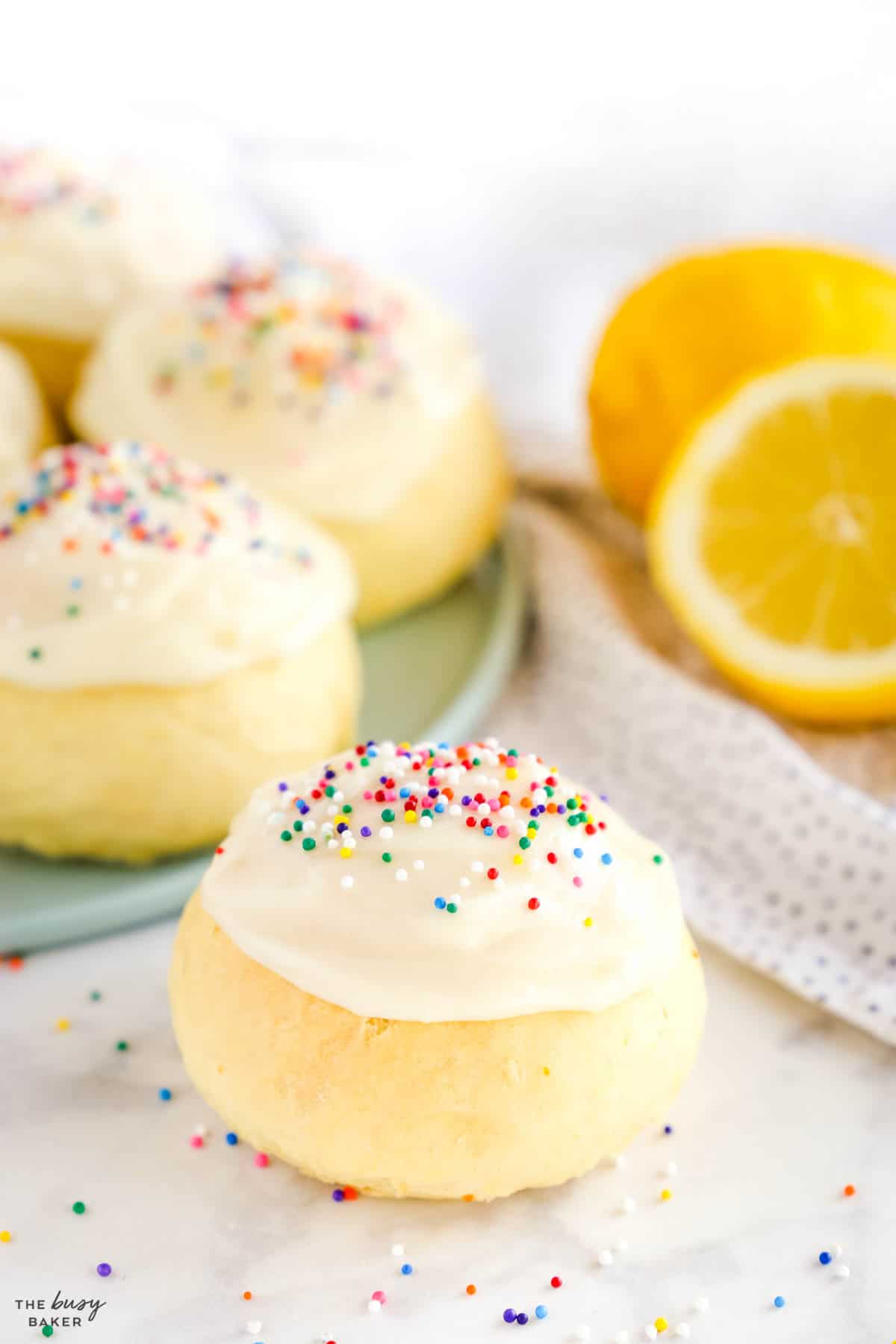
Time needed: 2 hours and 33 minutes
Follow these steps to make the BEST Paska!
- Start with the yeast.
Add the yeast, water and sugar to the bowl of a stand mixer fitted with a dough hook attachment (or use a large bowl and a hand mixer with a dough hook attachment). Let rise for 2 minutes.
- Add the flour.
Add 6 cups of the flour and salt to the bowl with the yeast mixture.
- Zest your citrus.
Zest the lemon and orange and add the zest to the bowl with the flour and yeast mixture.
- Blend the fruit.
Peel the orange and lemon and add the flesh of the fruit to your blender (be sure to remove the seeds).
- Add the liquid.
Add the milk, melted butter, eggs and sugar to the blender and blend on high speed until smooth.
- Make a sticky dough.
Add the contents of the blender to the bowl of the mixer and mix on low speed until a sticky dough forms.
- Add in the flour.
Add the additional 1 to 1 1/2 cups flour as the mixer kneads the dough, 1/2 cup at a time until the dough becomes less sticky, but still soft.
- Let it rise.
Cover the bowl with plastic wrap and rise for 90 minutes.
- Divide the dough.
Divide the dough into 30 equal pieces and roll each piece into a round bun shape. Place the buns on parchment paper-lined baking sheets. This recipe makes 3 full loaves instead of buns, if you prefer.
- Cover and let rise.
Cover with a kitchen towel and rise for about 20 minutes. This is a good time to preheat your oven to 325 degrees Fahrenheit (165 degrees Celsius).
- Place them in the oven.
Bake the buns at 325 degrees Fahrenheit (165 degrees Celsius) for about 18 minutes or until the buns are light golden brown on top.
- Cool.
Let the buns cool on the baking trays until completely cool.
- Make the frosting.
Mix the frosting ingredients, top each bun or loaf with frosting, and don’t forget the sprinkles!
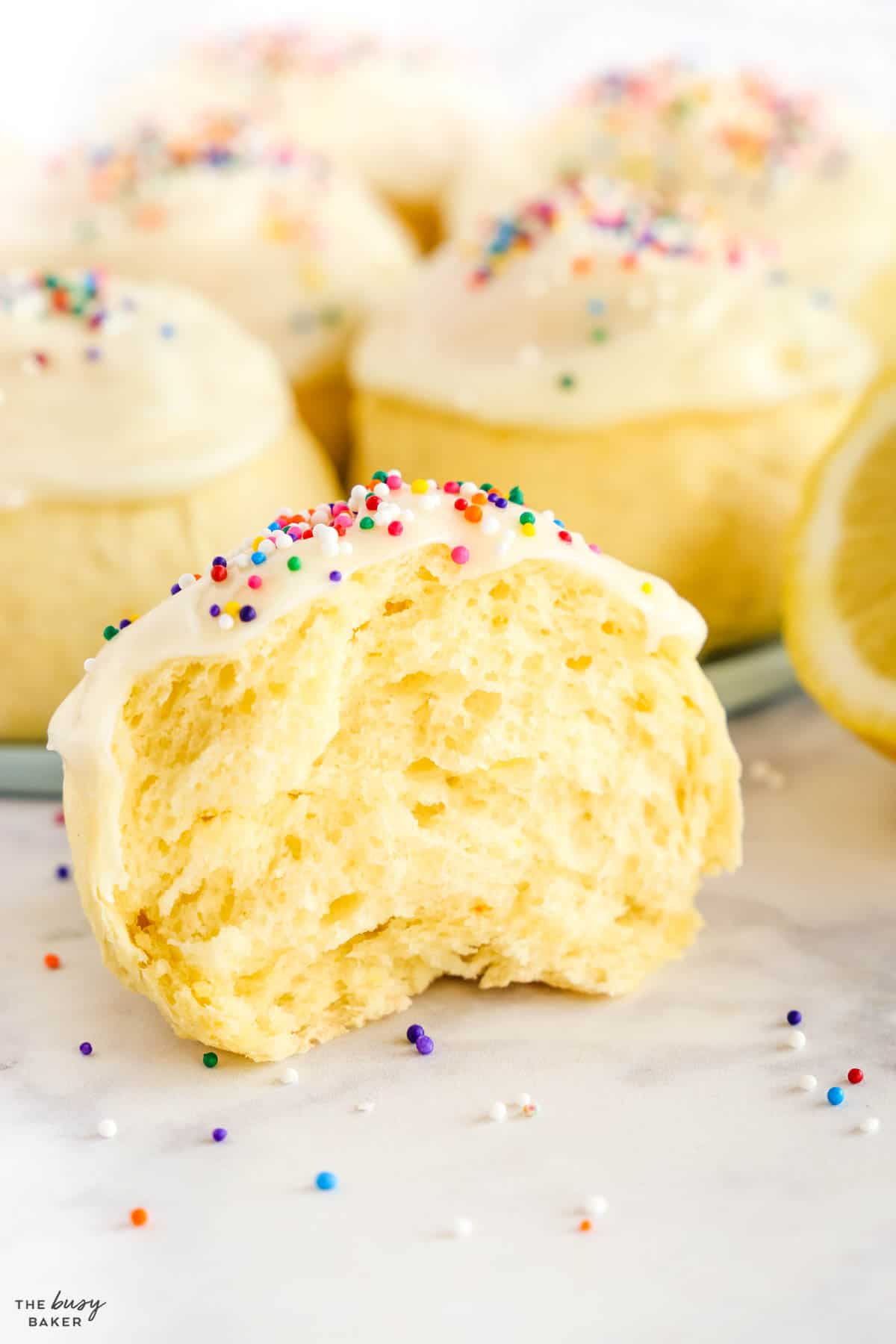
How can I prevent dry Paska?
To prevent dry Paska buns, it’s important to not over-mix the dough, bake for the appropriate amount of time, test with a toothpick until it comes out clean, give the dough just enough time to proof and make sure to store it in an airtight container.
Do I need a bread machine to make Paska bread?
No, you can make Paska bread in a stand mixer with a dough hook attachment or a hand mixer with a dough hook attachment.
How do I store Paska buns?
Do not refrigerate the Paska buns after baking as this dries them out. Store in an airtight container at room temperature for up to 3 days.
Can I freeze Paska for later?
Yes. Paska can be frozen. It is best to freeze it without the frosting and sprinkles otherwise the sprinkles bleed when the buns thaw.
Can the citrus be left out of the Paska bread recipe?
No, Paska bread without the iconic citrus flavour isn’t Paska, and the citrus adds both flavour and moisture. The recipe won’t give you a good result if you don’t add the citrus.
Can I make this recipe as Paska bread instead of Paska buns?
Yes! This recipe makes buns, but it also makes 3 medium-sized standard loaves. Adjust the baking time for loaves, as they take longer to bake than buns. We suggest baking for 30-45 minutes, depending on your oven, making sure to rotate the loaves once during baking.
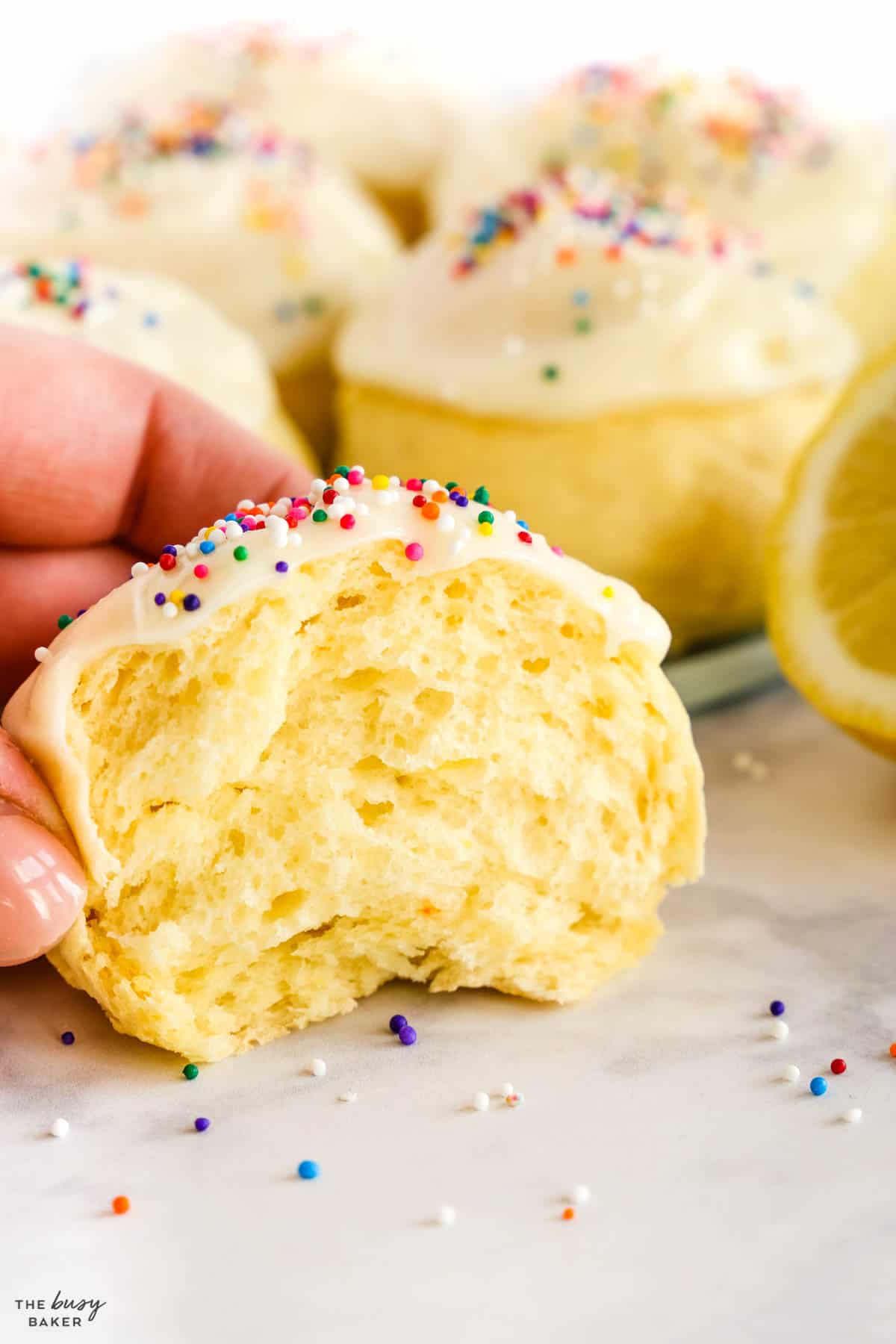
We hope you love this Paska buns recipe as much as we do! Let us know in the comments below, what’s your favourite traditional Easter recipe? We’d love to know!
- Easy No Churn Chocolate Ice Cream
- Easy No Churn Creme Egg Ice Cream
- Mini Eggs Chocolate Chip Cookies
- Mini Eggs Easter Brownie Parfaits
- Easy No Bake Mini Eggs Cheesecake
- Balsamic Honey Glazed Carrots
- Maple Rosemary Roasted Sweet Potatoes
- Easy Maple Dijon Glazed Ham
Watch the video below to see exactly how we make this great spring recipe. You can find more delicious recipe videos on our YouTube channel.
If you made this, share a photo!
Are you trying this recipe? Use the comment form below to share your take; now with support for image uploads and comment voting!
Paska
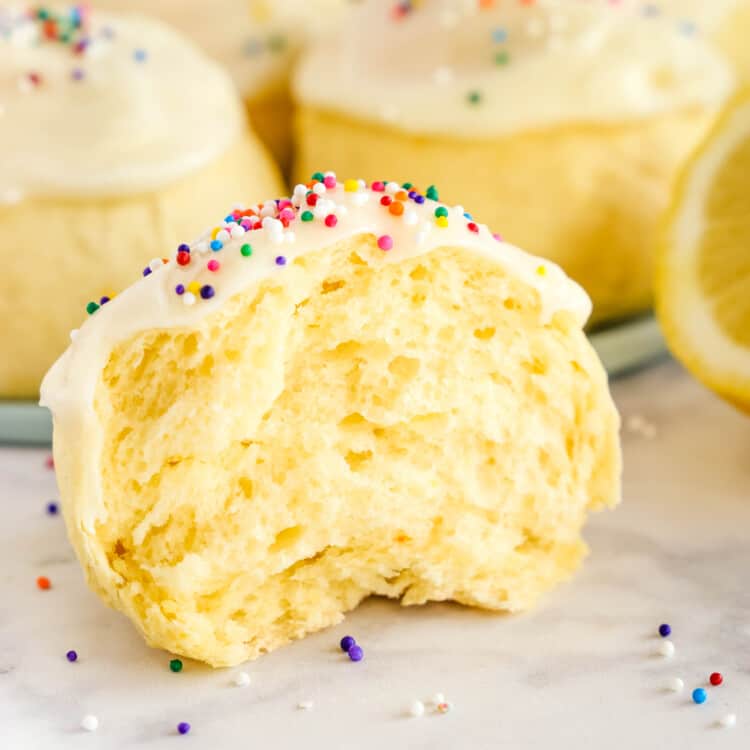
Recipe: Equipment
- loaf pans optional
Recipe: Ingredients
For the buns:
- 2 tablespoons active dry yeast
- 1 cup room temperature water
- 1 teaspoon white sugar
- 7 – 7 1/2 cups all purpose flour
- 3/4 teaspoon salt
- 1 lemon
- 1 orange
- 1 1/4 cups milk, at room temperature
- 1/2 cup butter, melted
- 2 eggs
- 3/4 cup sugar
For the frosting:
- 8 ounces full fat cream cheese, at room temperature
- 1/2 cup butter, at room temperature
- 2 cups powdered sugar
- a few drops of milk, until spreadable consistency is reached
- sprinkles (if desired)
Recipe: Instructions
For the buns:
- Add the yeast, water and sugar to the bowl of a stand mixer fitted with a dough hook attachment (or use a large bowl and a hand mixer with a dough hook attachment). Let rise for 2 minutes.
- Add 6 cups of the flour and salt to the bowl with the yeast mixture.
- Zest the lemon and orange and add the zest to the bowl with the flour and yeast mixture.
- Peel the orange and lemon and add the flesh of the fruit to your blender (be sure to remove the seeds).
- Add the milk, melted butter, eggs and sugar to the blender and blend on high speed until smooth.
- Add the contents of the blender to the bowl of the mixer and mix on low speed until a sticky dough forms.
- Add the additional 1 to 1 1/2 cups flour as the mixer kneads the dough, 1/2 cup at a time until the dough becomes less sticky, but still soft.
- Cover the bowl with plastic wrap and rise for 90 minutes.
- Divide the dough into 30 equal pieces and roll each piece into a round bun shape. Place the buns on parchment paper-lined baking sheets.
- Cover with a kitchen towel and rise for about 20 minutes. This is a good time to preheat your oven to 325 degrees Fahrenheit (165 degrees Celsius).
- Bake the buns at 325 degrees Fahrenheit (165 degrees Celsius) for about 18 minutes, or until the buns are light golden brown on top.
- Let the buns cool on the baking trays until completely cool.
For the frosting:
- To a medium bowl, add the room temperature cream cheese and room temperature butter, then cream them together with a hand mixer or wooden spoon.
- Add the powdered sugar 1/2 cup at a time and mix well until blended, scraping down the sides of the bowl after each addition.
- Add a few drops of milk if necessary to loosen up the frosting so it’s easily spreadable.
- Spread a little frosting over each of the cooled buns and sprinkle with sprinkles for decoration.
- Enjoy immediately or store in an air-tight container for up to 3 days.
Recipe: Notes
Storage Instructions
Do not refrigerate the buns after baking as this dries them out. Store in an airtight container at room temperature.Freezer Instructions
We recommend freezing after baking but before adding the frosting and sprinkles. Freeze in an airtight container or freezer bag and defrost at room temperature util thawed.How to Make Loaves Instead of Buns
This recipe can be made into 3 medium-sized standard loaves instead of buns. Divide the dough into 3 equal pieces, form the loaves and bake in greased loaf pans. Adjust the baking time for loaves, as they take longer to bake than buns. We suggest baking for 30-45 minutes, depending on your oven, making sure to rotate the loaves once during baking.Recipe: Nutrition
Notice: Nutrition is auto-calculated, using Spoonacular, for your convenience. Where relevant, we recommend using your own nutrition calculations.
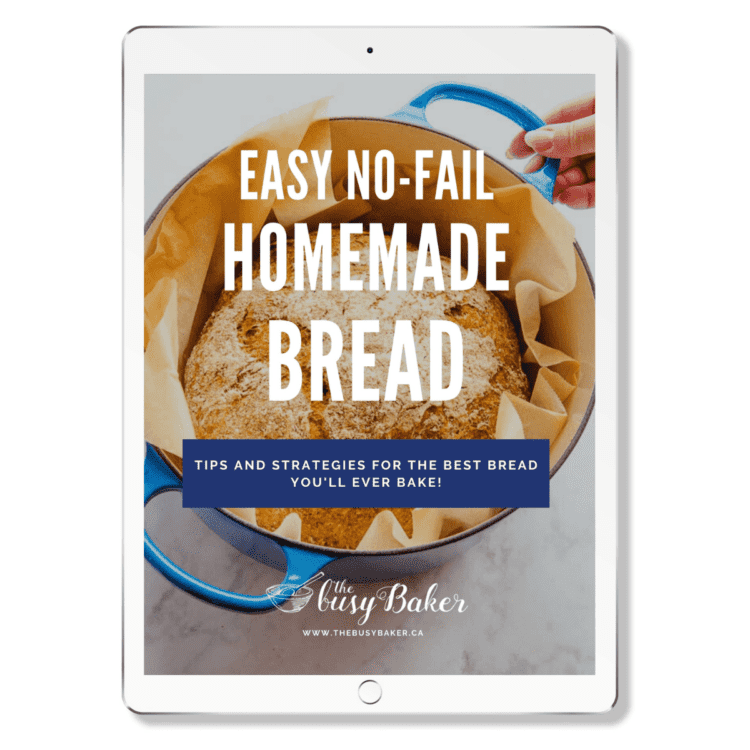
EASY NO-FAIL HOMEMADE BREAD RECIPES AND BAKING TIPS
Get my easy no-fail bread baking e-cookbook!
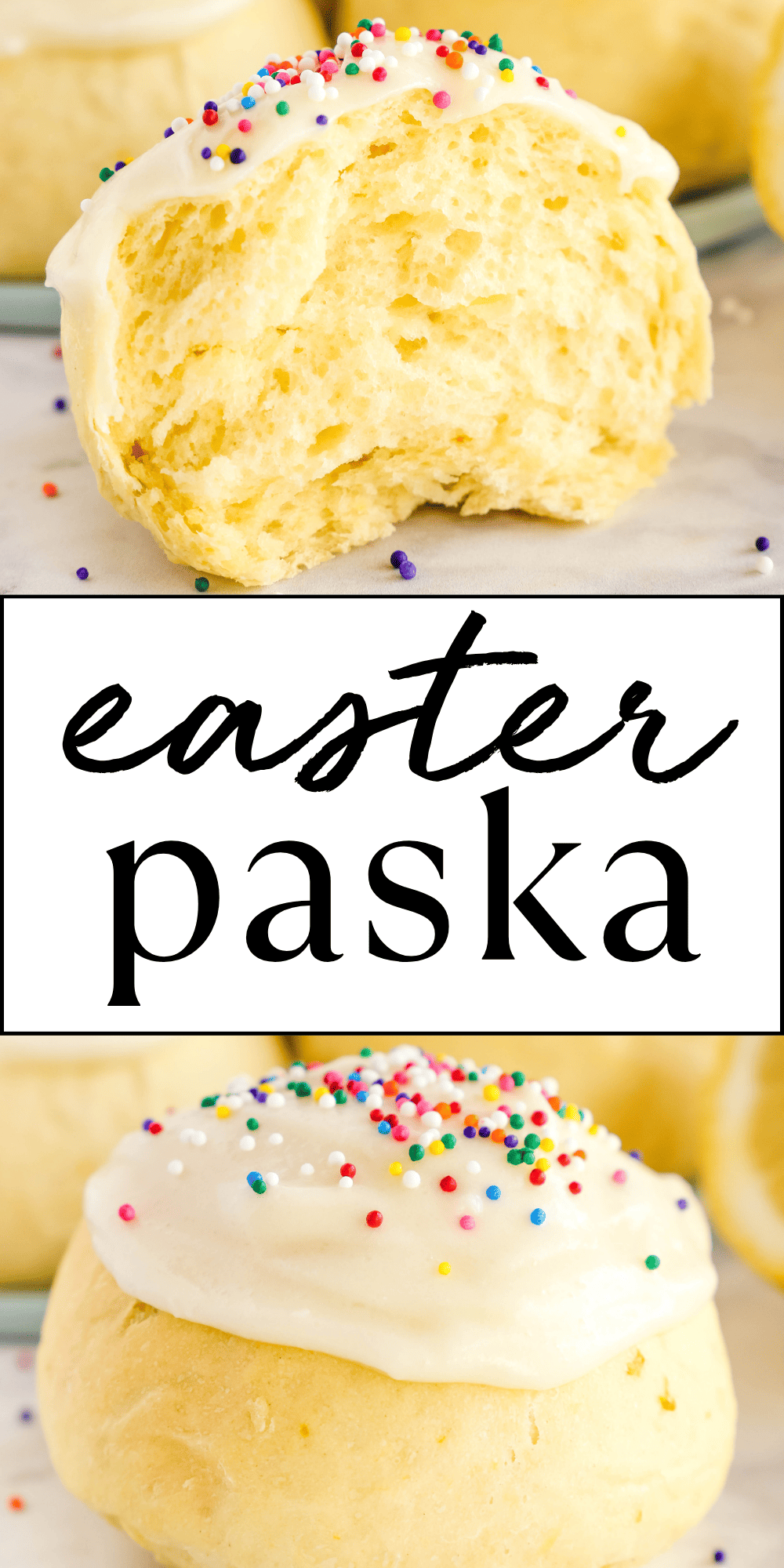

Yum! I use a very similar recipe too, only I substituted kefir (or buttermilk) instead of the milk. Gives them that extra soft springiness! And we top it with paska spread! It’s a cheese icing made from cottage cheese, whipping cream (or sour cream), sugar, lemon and boiled egg yolks. Sounds weird but it’s amazing!
That sounds interesting! 🙂
What is the recipe for this cottage cheese icing?! I’m very intrigued!!
I made the same icing except my husband calls it “paska spread”. So delicious!
Happy to hear you both found it delicious!🙂
Sounds good, I think this is a Mennonite recipe. Very similar if not.
Yummy … the list of cakes to make in this Easter just gets longer and longer. So hard to decide which one.
Thanks so much! I hope you enjoy them!
are these buns too sweet to use as dinner rolls
Yes, they’re fairly sweet and have a definite citrus flavour 🙂
Yes they are.
These look amazing! I mean, who doesn’t like a sweet treat with some sprinkles?! I know I do!
Thanks so much!
I absolutely love how these look! So tasty and yet so simple
Thanks so much!
I love the texture of these Easter Paska Buns! I would love to have them for Easter!
Thanks so much!
I can’t wait to try these! I think these are going to be our new Easter tradition!
Hope you love them! 🙂
How sticky should the dough be? Should I be able to touch it without getting dough on my hands?
No, it’s pretty sticky. Before the first rise my hands are always sticky when I work the dough.
I am sure this will be a new favorite in my house!
Thanks! Hope you enjoy!
This is the recipe I’ve been looking for and look forward to making it this week for Easter! I’d like to make as loaves. Would you know the temp and time conversion please?
It makes about two big loaves or three small ones. The temperature should be the same but I cannot comment on the time as i do not use this recipe to make loaves. However, you will know they are done when they are golden brown on top.
I made these and shared them with three other people and all of us agree that this was the best paska we’ve ever had! I’m saving this recipe for years to come ♥️
Oh, that’s so nice! Really happy you enjoyed this recipe and thanks for sharing it with others Rachelle!
These were absolutely delicious & very easy to make. I did deliveries of buns & frosting. First time I’ve made Paska. Thanks for the recipe
You’re welcome Judi! Glad you and others enjoyed it so much!😊
Could one make this recipe into loaves? Cook it a bit longer, say 50-60 minutes? Have you ever tried that?
Yes, i’ve made it as loaves before and it makes 3. I haven’t made it like that in a very long time though, so, i’m so sorry but i couldn’t give you a baking time but i suggest you watch them carefully after about 20 minutes. Happy baking!
I made these a couple of years ago and they were wonderful. Very moist and lovely flavour.
I’m glad you enjoyed them!☺️
What size pan are you using for the 30 buns?
I’d suggest a standard size baking sheet.
These were AMAZING!!! We used buttermilk to make them softer.. instead of the whole fruit we used currants and tiny fruit pieces and lemon essence along with the rind of the lemon and orange..
topped it with a butter cream cross – like hot cross buns — OMG!!! I could have eaten the whole pan before Easter!!
Excellent!
Thanks so much Cheryl!! Really glad you like the recipe!
The best recipe ever! Thank you so much for posting. Bread making always intimidates me, but these were a great success!
So happy to hear that! You’re welcome Donna!
These are definitely different for our Easter household. But they smell and look fantastic. Too hot to dress yet, but Ia excited
I’m so happy you are enjoying them! Thank you for taking the time to leave your feedback!
Happy Easter Chrissie and Fam! Just sitting down for breakfast and then we will get started on our Paska!
Thank you! Happy easter to you and your family too!
Hi! I’ve been making a similar paska recipe for over a decade but it is scant on details and I’ve never managed to get the texture the same as my grandma’s. This year we are doing Easter a week late and smaller and I sought out an easier recipe. Honestly this is the best paska I’ve made yet. I followed it almost exactly except doubled the lemon and omitted the orange and added a bit of vanilla just to make it more like the family recipe. But the amazing thing is that this method was half the work and yet still an amazing result. Thanks so much.
I’m so happy you enjoyed them! Thank you for taking the time to leave your feedback!
Can I leave out the orange and lemon? My husband is not a fan of citrus. If I leave it out should I substitute something else?
You can, however you might find your paska buns a bit bland. You can try adding some vanilla bean paste instead. Let us know how they turn out!